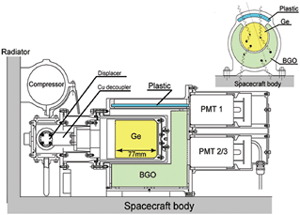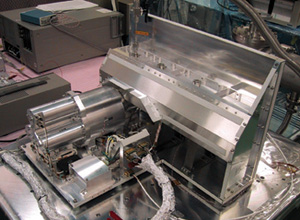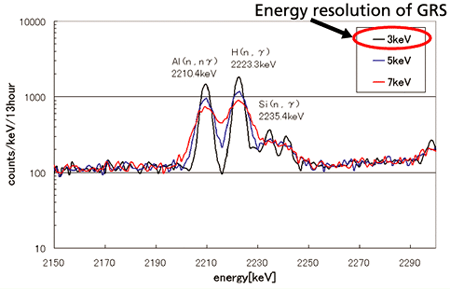Gamma Ray Spectrometer (GRS)
A germanium semiconductor crystal cooled to below -180 degrees centigrade by a Stirling cryocooler is employed as a main detector of GRS. GRS has an excellent energy resolution 20 times superior to those used in past lunar missions. Thus, GRS can discriminate the incident gamma-ray energies with high precision and can determine abundances of more than 10 elements in the lunar surface.


- Neutrons are produced in the lunar subsurface by irradiation of Galactic Cosmic Ray.
- Gamma rays with the energy characteristic to each element on the Moon are produced by interactions of those neutrons with surface elements. Natural radioisotopes also emit gamma rays.
- Elemental composition is determined by measuring the gamma-ray energies from the lunar orbit.

GRS
- GRS will observe chemical abundances of materials (K, U, Th, O, Mg, Al, Si, Ti, Fe, Ca, H, etc.) on lunar surface globally. The results will be highly accurate and will provide clues leading to advancement in research of the origin and evolution of the moon.
- The observations will contribute to lunar resource exploration, especially for water existence. Water is very essential for human activity in a lunar platform in the future and local supply of water is necessary for the sake of cost performance. GRS can identify gamma rays from hydrogen and can map hydrogen.
Measurement of elemental abundances with excellent precision

Evidence of water - A hydrogen peak is appeared if water exists on the moon.

GRS 

Nobuyuki Hasebe
Science and Engineering,
Waseda Univ.